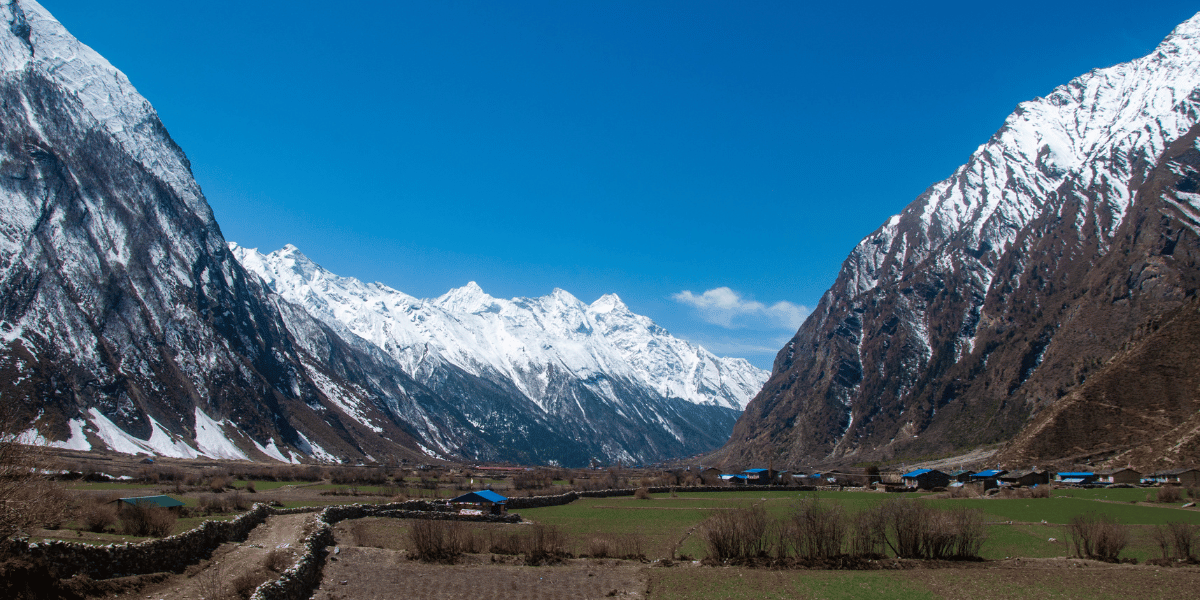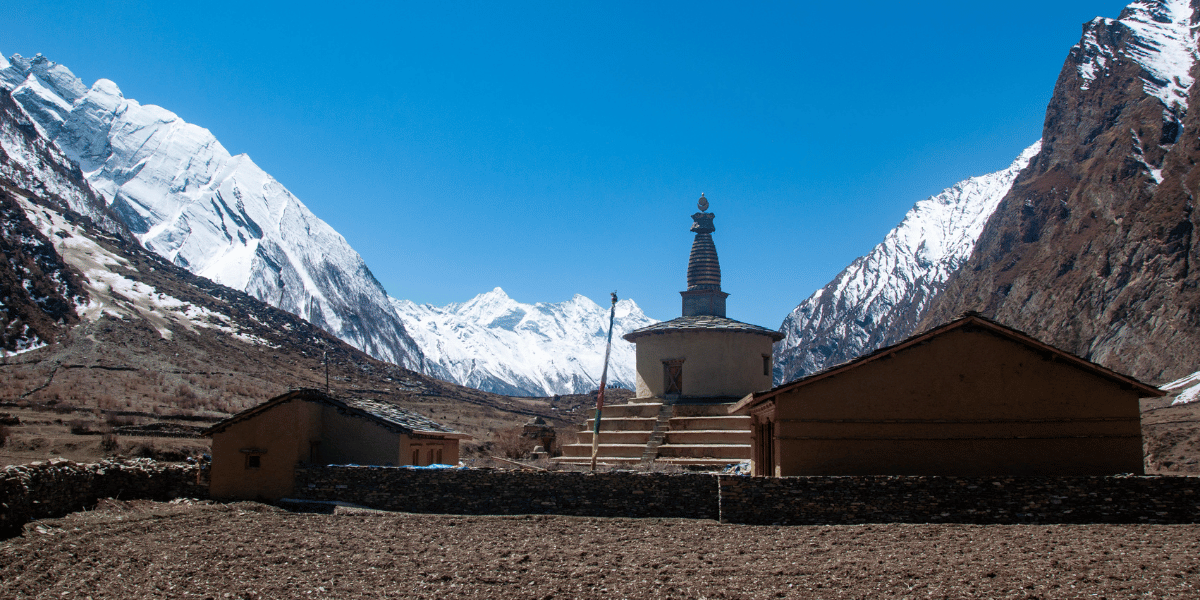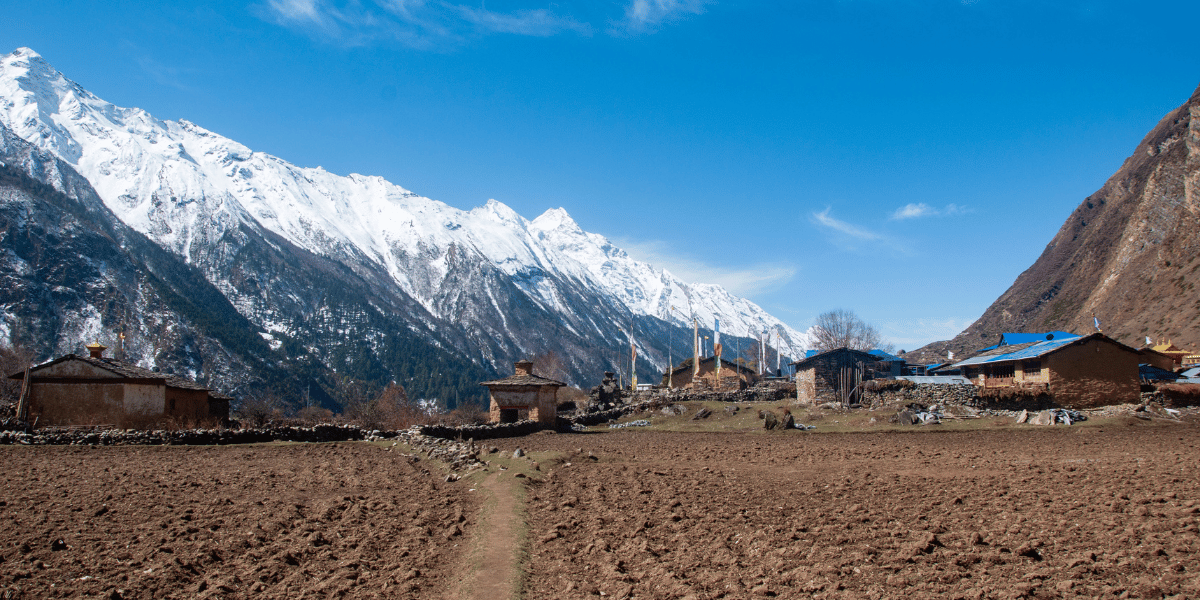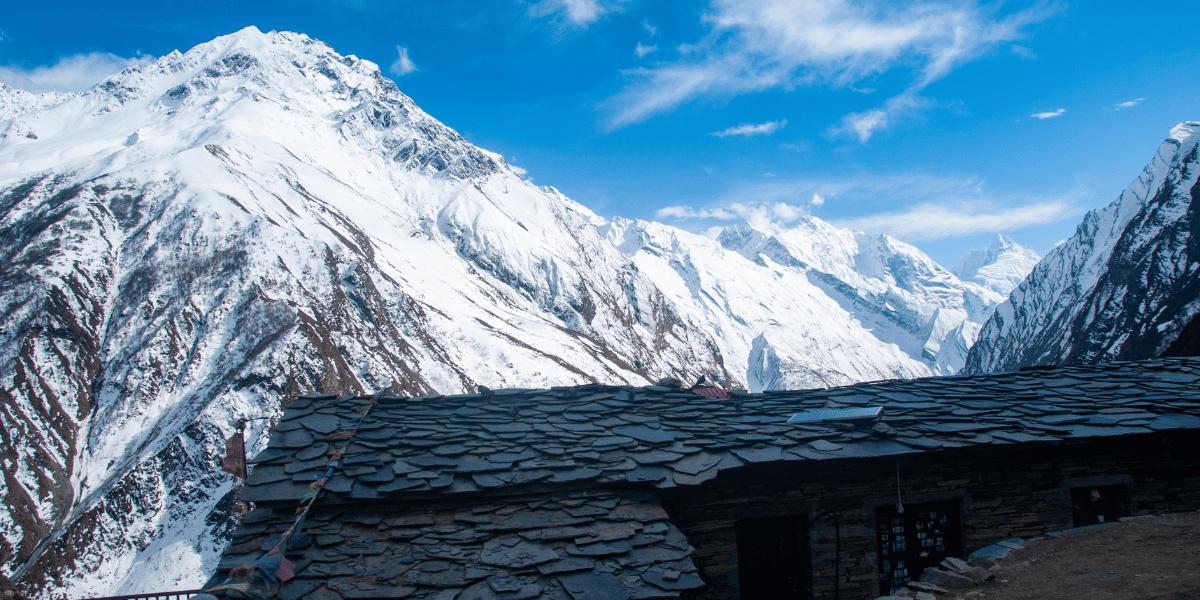Tsum, which means "vivid" in the native language, is situated in the Manaslu region near the Tibetan borders. It is known for its jaw-dropping scenery and secluded atmosphere, offering stunning views of Nepal's high mountains and rich biodiversity. Tsum Valley is renowned for its residents who closely adhere to Tibetan Style Buddhism, which is one of the major highlights of the valley. The residents of Tsum Valley are known as Tsumba, who are the indigenous people of the region. They follow a traditional practice called Bon religion, which has ancient roots in Buddhism. The valley is located within the Manaslu Conservation Area, with the Tsum Valley being situated in a restricted area. This is done to preserve the ancient culture and glorious splendour of the region. The Tsum Valley in Nepal is a true hidden gem, boasting untouched natural beauty that is rarely found in other popular trekking regions. Setting out on this trek promises an exquisite and unforgettable experience. The total duration of the trek is 12 days, during which you will traverse challenging trekking trails, beautiful valleys, scenic villages, and experience a peaceful journey.
Nepal is an outstanding destination, where the combination of geography and culture is unmatched. During your trip, you'll have the opportunity to witness amazing landmarks and discover remarkable destinations that provide unforgettable experiences. During your time in Nepal, you will visit captivating places and immerse yourself in the country's beauty. During your journey, you'll get to witness and experience the incredible wonders that Nepal has to offer. Nepal offers a diverse array of cultural and natural elements that vary across its different regions. There are numerous ways to appreciate the beauty of these places, such as sightseeing, scenic drives, and, of course, trekking. During your time in the city, you'll have the opportunity to discover and appreciate the country's significant landmarks. Explore the rich history of the area and fully experience its dynamic art scene. While trekking, you can fully experience the beauty of nature and encounter a wide variety of wildlife in stunning landscapes.
Kathmandu City Exploration
During your time in Kathmandu, you can enjoy sightseeing and discover the incredible landmarks within the Kathmandu Valley. Kathmandu is renowned for its numerous temples, earning it the nickname 'the city of temples'. Kathmandu is a captivating blend of modern development and rustic beauty, where one can witness the coexistence of high-rise buildings and ancient temples in a single location. These sites are considered national treasures and are listed on the UNESCO World Heritage Site. They provide valuable insights into the country's rich history and art.
Kathmandu Durbar Square, a former royal palace situated in the heart of a vibrant city, is filled with centuries-old temples and remarkable architectural marvels. These ancient temples and historical sites have stood the test of time, inviting visitors to explore and marvel at their remarkable splendour. Another one is Swayambhunath Stupa, also referred to as the "Monkey Temple’’ located at a small hill inside Kathmandu Valley. This site is dedicated to advocating religious harmony between the Hindu and Buddhist religions. The location offers a stunning vantage point, showcasing the incredible splendour of the entire Kathmandu city. This remarkable location can be reached by ascending numerous stairs, as it sits atop a hill. The walk is definitely worth it, despite its physical challenges. Next is Pashupatinath Temple, one of the most revered Hindu temples, dedicated to the Hindu deity Shiva. The entire pilgrimage site is filled with devoted individuals who visit to pay homage and show their devotion. The structures in the Pashupatinath area are predominantly pagoda-style and have a rich history dating back to the Malla era. Last but not least, Boudhanath Stupa, a site dedicated to Buddhism, serves as a pilgrimage destination for Buddhists. This stupa is one of the largest in the world and holds immense spiritual significance for Buddhists. It is regarded as a highly important site for followers of Buddhism. Besides its religious significance, the stupa is adorned with beautiful prayer flags believed to carry peace worldwide.
The Trekking Journey
Jagat serves as the starting point for the trek, which can be easily reached by road from Kathmandu. The location is at an elevation of [1,340m/4,396 ft] near Soti Khola (river). Getting to Jagat requires a drive of approximately 6-7 hours, followed by a short walk since the road only extends to the destination. The route to Jatag passes through various locations, including Dhading and Besi Sahar. The location of this place is picturesque, nestled near a beautiful river known as Machha Khola. You will spend the night at Jagat and then begin your journey from there.
The trails of Manaslu Tsum Valley Trekking are adorned with gorgeous Chortens and bordered by Mani walls. The walls are decorated with exquisitely crafted stone slabs, each showcasing intricate carvings of deities and adorned with heartfelt prayers. Meanwhile, the people in this place refrain from taking the lives of animals, even when making sacrificial offerings to the gods, following their beautiful culture. The Tsum Valley is a captivating destination, boasting a rugged and untamed landscape. Its lush greenery, dramatic canyons, charming villages, sacred monasteries, ornate Buddhist shrines, and towering snow-capped peaks create a truly awe-inspiring experience. As you venture away from the main Manaslu Trail and step into the Tsum valley, a distinct feeling of exploration washes over you, as though you're walking on a journey into a hidden and remote realm. This trek provides a one-of-a-kind experience in comparison to others. The walking routes offer a serene escape from the crowds, allowing you to fully immerse yourself in the unspoilt splendour of the surrounding nature.
The Manaslu region in Nepal stands out from other popular trekking regions in the country due to its unexplored trekking areas and limited settlements. Several settlements and villages demonstrate captivating beauty and rustic charm. These locations have their roots in a lively cultural heritage where residents continue to embrace age-old traditions in their daily routines, resulting in a straightforward yet impactful way of life. The villages are located in stunning settings, with snow-capped mountains and high hills surrounding them, creating a breathtaking view and a peaceful atmosphere. There are some truly authentic villages to discover, such as Chumling, Chhokang Paro, and Mu Gumba - the ultimate destination. The villages mentioned are located near the Nepal-Tibet border, which has greatly influenced these places. As a result, you can observe the Tibetan-influenced culture, cuisine, traditions, and even architecture.
What to expect?
On this 12-day journey, you will have the opportunity to discover the captivating allure of both bustling urban centres and serene countryside landscapes. The Tsum Valley trek presents a captivating experience, featuring a diverse range of landscapes, abundant biodiversity, vibrant ethnic cultures, and intriguing traditions. Exploring this route will take you through stunning landscapes, picturesque countryside, and lush green forests. This trek is absolutely incredible. Not only is this the final destination, but the journey itself is filled with wonder. Along the way, you'll encounter some of the most surreal valleys nestled beneath towering mountains and a truly unique landscape. During your trek, you will come across charming villages where you can stay overnight in local lodges and tea houses. Immerse yourself in the beauty of simplicity and the untamed rawness of nature.
Once you enter Tsum Valley, you will be immersed in a vibrant and captivating experience. The valley is enveloped by breathtaking scenery, with majestic snow-capped mountains and a rich Bon-Po culture evident in the beautiful Mani Walls, vibrant prayer flags, and ornate Chortens along the paths. The Tsumbas have a rich heritage in this valley, as they are direct descendants of the Tibetan people. The Manaslu Tsum Valley is widely recognised for its unspoilt and secluded natural beauty, establishing itself as a rare gem among untouched destinations across the globe. The Tsum Valley trek is characterised by its challenging geographical conditions, which have resulted in limited development in the area. As a result, you can explore fascinating cultures that have been around for centuries.
The Tsum Valley trek is known for its challenging nature, as it takes you through high-altitude terrain with off-the-beaten trekking trails. This trek demands quite a bit of physical endurance, as you will be required to walk for around 6-8 hours per day to reach your destination. Aside from the challenging hike, you'll come across a daunting trekking pass that reaches an altitude of over 3,000m. Walking in a challenging landscape during the trek can be quite challenging, but the awe-inspiring scenery and unforgettable moments make it all worth it. The sights you'll come across during your journey are thrilling. During the trek, a highly experienced trekking guide will be with you every step of the way. They will offer valuable insights about the region and ensure your safety, making your trek an unforgettable experience.
The trek to Tsum Valley, often called the hidden gem, is truly an intriguing journey that transports you to a region seemingly frozen in time. As you embark on your journey, you will traverse scenic hiking trails that will guide you to charming villages and astonishing destinations. You'll be amazed by the magnificent mountains and distinctive geography that set Nepal apart from any other region. The Tsum Valley trek has not received much attention, which actually adds to its appeal. It is a hidden gem that allows you to experience ancient culture and untouched natural beauty. Join us on an exciting journey to explore the jaw-dropping wonder of the Manaslu region, where you'll encounter awe-inspiring countryside and captivating suspended marvels.
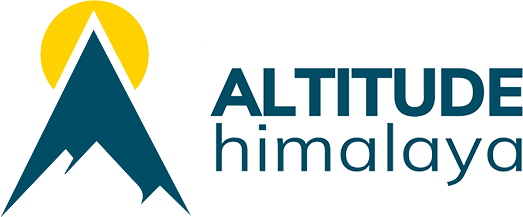

 Adventure
Adventure
 Couple
Couple
 Family
Family
 Luxury
Luxury
 Motorbike
Motorbike
 Photography
Photography
 Wildlife
Wildlife
 Yoga
Yoga
 Annapurna
Annapurna
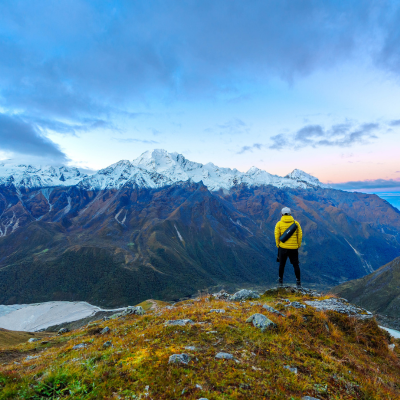 Langtang
Langtang
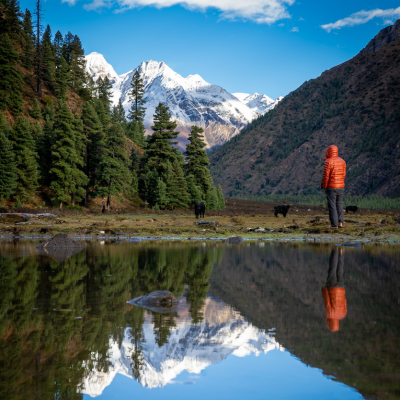 Dolpo
Dolpo
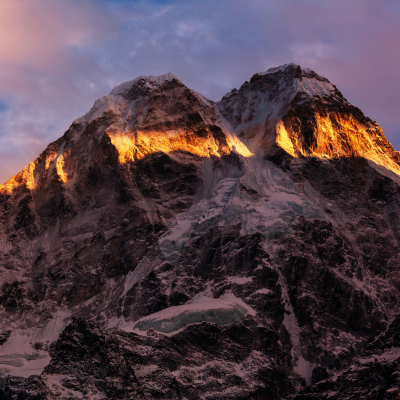 Eastern Nepal
Eastern Nepal
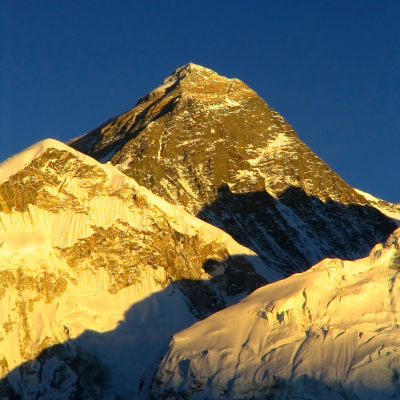 Everest
Everest
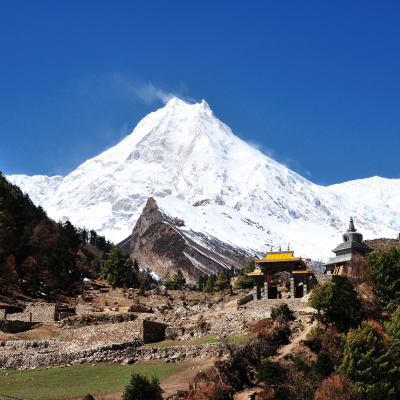 Manaslu
Manaslu
 Western Nepal
Western Nepal
